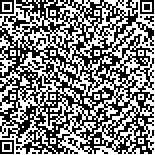本文已被:浏览 1788次 下载 3936次
投稿时间:2016-06-03 修订日期:2016-09-18
投稿时间:2016-06-03 修订日期:2016-09-18
中文摘要: CRA(contiguous rain area)空间检验技术是将连续雨区作为目标进行检验。通过设定降水量阈值,识别、分离及平移降水目标,将预报偏差分解为落区、强度和形态误差,该方法可避免传统TS评分的双惩罚效应。利用CRA空间检验技术对2011—2014年5—9月西南地区东部EC细网格模式36 h预报时效119个降水目标的预报误差进行分析,并按照环流形势和影响系统对强降水个例进行分型,分为西南地区东部低涡切变型、西南地区东部 江淮切变型、南风型,分别对上述三类不同类型强降水个例的落区和强度误差进行了对比。得到如下结论:西南地区东部降水预报形态误差占比最大,为60%左右,其次是落区误差,为30%左右,强度误差最小,约为10%;落区平均偏西0.7°,经向偏差不明显;模式对于水平尺度较小的降水目标漏报可能性较大,而对于天气尺度降水目标模式预报面积偏大,总降水量偏大,雨强偏小;西南地区东部低涡切变型和西南地区东部 江淮切变型降水强度预报误差类似,模式预报雨区面积均偏大,降水尺度越大,偏大的概率越大,实况平均降水强度越强,模式预报强度越偏弱;南风型预报强降水面积和平均强度均偏弱,出现漏报的概率较大;而对于最大降水量,三种类型模式预报的最强降水均较实况偏弱;西南地区东部低涡切变型模式预报落区偏西,江淮至西南地区东部切变型模式预报落区偏西偏北,南风型模式预报落区偏西偏南。
Abstract:The contiguous rain area (CRA) is an object oriented verification procedure. By setting a threshold for precipitation, the CRA is identified and isolated, and the forecast error of the rain area can be analyzed. This method can avoid the “double penalty” effect of traditional score method. The horizontal displacement is determined by translating the forecast rain field to the observation. This allows a decomposition of total error into components due to the rain location, amount and pattern. 119 CRAs from May to September in 2011-2014 over the east of Southwest China were found by using the CRA technique. Their location and intensity errors of the forecast by ECMWF model in 36 h were analyzed by the CRA verification method in this paper. Then these cases were classified into three types according to the weather systems, i.e., the low vortex and shear line over the east of Southwest China (the first type), the shear line located over Jianghuai Basin and the east of Southwest China (the second type), and the southerly wind type (the third type), respectively. The systematical error of each type was presented. The results showed that the pattern error for all CRAs is the greatest about 60% of the total error, then is the location error, about 30%, and the amount error is the least, about 10%. The average location error is 0.7° westward to observation, and the meridional displacement error is not clear. The mesoβ scale rain area may fail to be forecasted by the model. However the horizontal scale larger than mesoβ scale rain events would be over forecasted to have more rain area and total rainfall, but weaker intensity. The intensity error is similar to the first and the second types, in which the rain areas are over forecasted and the average rain intensity and maximum rainfall are under forecasted. However, the intensity is under forecasted or the event is missed for the third type. For the location error, it is westward for the first type, northwestward for the second type, and southwestward for the third type.
文章编号: 中图分类号: 文献标志码:
基金项目:中国气象局预报员专项(CMAYBY2016 086)、公益性行业(气象)科研专项(GYHY201306002、GYHY20130613和GYHY201406001)和预报预测核心业务发展专项(CMAHX20160101)共同资助
| Author Name | Affiliation |
| FU Jiaolan | National Meteorological Centre, Beijing 100081 |
| DAI Kan | National Meteorological Centre, Beijing 100081 |
引用文本:
符娇兰,代刊,2016.基于CRA空间检验技术的西南地区东部强降水EC模式预报误差分析[J].气象,42(12):1456-1464.
FU Jiaolan,DAI Kan,2016.The ECMWF Model Precipitation Systematic Error in the East of Southwest China Based on the Contiguous Rain Area Method for Spatial Forecast Verification[J].Meteor Mon,42(12):1456-1464.
符娇兰,代刊,2016.基于CRA空间检验技术的西南地区东部强降水EC模式预报误差分析[J].气象,42(12):1456-1464.
FU Jiaolan,DAI Kan,2016.The ECMWF Model Precipitation Systematic Error in the East of Southwest China Based on the Contiguous Rain Area Method for Spatial Forecast Verification[J].Meteor Mon,42(12):1456-1464.

